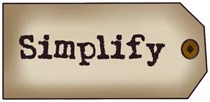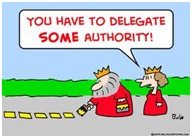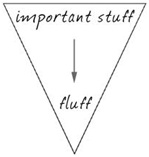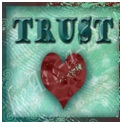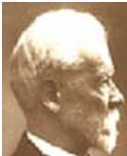|
 |
|
 |
|
|
||
Organizational structure
Organizational structure is... How an organization is organized. This is shown by an organization chart.
How are big companies structured? They have divisions normally based on:
Each division:
How to get the best structure 1. Strategy and customers come first Strategy must come before structure, the American economic historian, Alfred Chandler , advised. First, work out your strategy to satisfy your customers and then build a structure to do it.
2. Simplify Have the simplest structure possible to speed up effective decision making and so give the best and quickest possible service to customers. Therefore, the layers of management must be reduced to a minimum (called delayering). This will flatten the organizational structure and increase the number of people each manager is responsible for (called the span of control). This makes empowerment important, because employees will have to look after themselves by taking responsibility for customer satisfaction (directly or indirectly).
3. Centralization and decentralization A big company will have:
They centrally control things that are vital for the whole company like corporate strategy and financial controls. If the company has divisions, the chief executive will give them power (called delegation of authority) to run their own businesses within the policy guidelines set by head office. This is called decentralization and is important because it motivates people to achieve the organization’s aims including (most importantly) customer satisfaction. So any business must have a balance between: • Centralization – for achieving co-ordinated purpose (i.e. all employees working together
to delight customers and achieve other organizational objectives). • Decentralization – for autonomy, motivation and empowerment. This balance is what Tom Peters (pictured right) and Robert Waterman (pictured right below) called “loose-tight properties” in their book, In Search of Excellence. 4. Structure for change and innovation The structure must enable the organization to change and innovate continuously to satisfy changing customer requirements. So an organization’s structure must be:
a) non-hierarchical (emphasizing performance not position).
b) informal Small business units and small multi-functional groups with open communication and loosely defined roles.
c) anti-bureaucratic (a hatred of unnecessary paperwork and useless meetings).
d) knowledge driven (giving people knowledge and encourage them to share it). This knowledge driven structure was called:
5. The boundaryless organization This means removing communication barriers between different parts of the organization, so that everyone works together to achieve customer satisfaction. Therefore, information sharing and multi-functional/divisional teams result from a boundaryless organization.
6. The inverted pyramid This is turning the organization structure upside down, so that employees who deal directly with customers (or front line employees) are placed at the top of the organization. The inverted pyramid is only a useful ideal, if employees are truly valued (e.g. with better pay) relative to management.
7. Authority with responsibility If people have the power (or authority) to do something, they must also have the responsibility for it (i.e. be accountable for results). Both authority and responsibility must be clearly defined. Someone must also have the authority to make the final decision in a given area, whilst the chief executive has power over the whole organization via a clear chain of command (the line of authority from the top to the bottom).
8. Delegation This occurs when a boss gives someone the power (or authority) to do something. Delegation motivates people by increasing trust, freedom and job satisfaction. Strictly speaking, bosses can’t delegate responsibility, because they remain ultimately responsible for their subordinates’ actions.
9. Structure is for people The structure should
To avoid conflicting orders, every employee should only have one boss (or superior) – called the “unity of command” principle by the French management writer, Henri Fayol(pictured right) . But people can have more than one boss in a matrix structure that combines two different structures e.g. a school has a pupil structure (e.g. head of sixth form) and teaching structure (e.g. head of history). Companies may also combine product divisions with geographical trading regions (e.g. Europe and America).
10. Separation of line and staff Line activities are concerned with producing the organization’s products (e.g. production) and are helped by staff specialists (e.g. human resources and IT).
Key quotes explained
“Structure follows strategy” - Alfred Chandler (pictured right), Strategy and Structure (1962) Decide on your customer driven strategy and then work out a structure to best achieve it.
“Keep it simple, stupid (KISS)” - Tom Peters and Robert Waterman (pictured right), , In Search of Excellence (1982) The best companies have:
“Crazy times call for crazy organizations”, Tom Peters (American management writer). In times of high change (crazy times), an organization (including its structure) must continuously find new and better ways of achieving creativity, customer satisfaction and empowerment. “Maximize creativity...that means open structures, so that accepted thinking can be challenged”, Anita Roddick (founder of the Body Shop) said. To be creative and innovative an organization’s structure must encourage open, constructive debate and experimentation. “You need to set up and organize, so that you can do as many experiments per unit of time as possible”, Jeff Bezos, Amazon’s founder and boss, said.
Best books
Henri Fayol (pictured right), General and Industrial Management (1916) Employees should have only one boss (“unity of command”) and their activities co-ordinated to achieve a single objective (“unity of direction”).
Alfred Sloan (pictured right) , My Years With General Motors (1963) Sloan made General Motors the world’s top car company with:
Divisions were co-ordinated to achieve customer satisfaction (“co-ordinated decentralization”).
Richard Pascale (pictured right) , Managing On The Edge (1991) Structure must encourage creativity and change. Three things are necessary: • Fit – all the 7 S’s (structure, strategy, systems, staff, skills, style and shared values) should work towards the same objective of customer satisfaction. • Split – splitting the organization up into smaller sections and teams to give people the freedom and power to be creative. • Contend – encouraging constructive conflict, or creative argument, between employees with the same objective of customer satisfaction (called “harmony within discord”). (For more detail see Managing On The Edge in the Business Books section).
Henry Mintzberg (pictured right), The Structure of Organizations (1979) Structure requires the specialization of jobs and co-ordination between them, so they achieve an organization’s objectives. There are five ways to achieve this co-ordination:
a) mutual adjustment Co-ordination through informal communication and people changing jobs.
b) supervision One person telling other people what to do.
c) standardization of work processes (making them the same throughout the organization).
d) performance standards – to maintain the same levels of employee performance throughout the organization.
e) knowledge and skills (through training and recruitment). The more an organization has to change (because of changing customer requirements), the more it will need a decentralized structure to motivate and empower its employees. This confirms the conclusion of Paul Lawrence and Jay Lorsch in their book, Organization and Environment (1967) that structure depends on an organization’s situation.
Tom Burns and G.M. Stalker, The Management of Innovation (1961) There are two types of structure:
Fritz Schumacher (pictured right), Small Is Beautiful (1973) People will work better in smaller units, because they don’t get lost in a big structure i.e. “small is beautiful”. (For more detail see Small Is Beautiful in the Business Books section) |
|
|
||
|
|
||
| Copyright © wisdomtowin.com 2025 All Rights Reserved | ||
|




